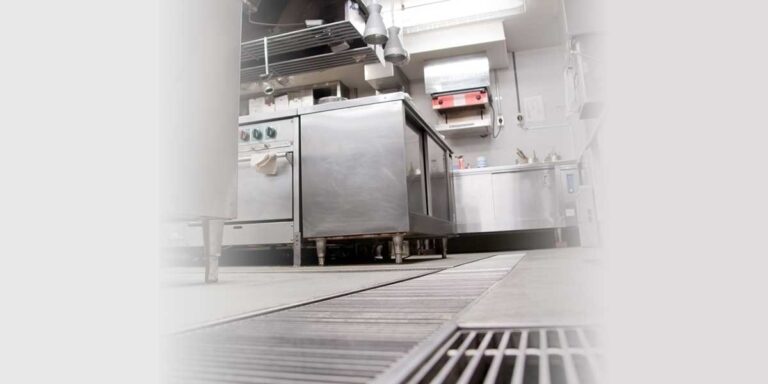Pressure from water companies is mounting for hospitality and food service operators to be held responsible for the Fats Oil and Grease (FOGs) that enter the drainage and sewerage network as a result of the site’s activities.
Sewer blockages caused by unsuitable non-flushables and FOG have not been far from the headlines in the past couple of years.
There is an estimated 270,000 food service establishments in the UK and all operations discharge some amount of Fats, Oil and Grease, starch and other organic matter into the drainage network through FOG sources such as preparation sinks, warewashing equipment, cooking appliances, pot and pre-wash sinks and floor gulleys.
It is generally accepted and recognised that through the use of the correct FOG Management technology and guidance and on-premises staff training and education programs, that FOG and organic discharge entering the kitchen drainage system can be dramatically reduced.
The various Water Company initiatives, are all about the raising of awareness to address the issue directly to the Operators, to make clear the legal and best practice responsibilities and to stimulate an active response and continual best practice programme. Keeping records is essential.
Committing to visit thousands of restaurants throughout a five year-programme, Southern Water is just one of the UK water companies taking a stand against FOG. Food service operators must recognise the short and long-term impact of the FOG they are discharging, not only for environmental reasons, but for compliance and operational best practice purposes, as the threat of fines looms ever closer for those evading current legislation.
One of Southern Water’s Network Enforcement Protection Officers, Steve Williams, said:
“Southern Water is committed to a programme of FOG reduction across our region over the next five years, and we are asking all food service establishments to assist in our project. At the heart of FOG management is staff training and good housekeeping, supported by an appropriate, well sized, managed and maintained grease management system, and it is something that every food service establishment should have in place in order to avoid any chance of prosecution and large fines.”
The volume of FOG discharge produced by a food service operation depends on a variety of factors including menu design, scale and type of operation, and the equipment used.
Best practice in the management of FOG discharge encourages those responsible for reviewing, designing, specifying and installing a FOG management system to visit the site to make an assessment, and to review plans of the site including drainage layouts.
In assessing a site, all factors including design, equipment, staff training, and working procedures need to be considered in order to develop a system that minimises the riskof FOG entering the drainage system. It is important to look at the entire range of catering equipment and process used and assess the potential to generate FOG discharge, and in what quantities.
Food service operators have a responsibility to employees to provide safe, clean working conditions and to customers, to serve food that is stored and prepared safely and hygienically. The chosen FOG management system must not compromise hygiene & safety in the food service operation and must adhere to food safety regulations and guidelines
A multitude of technologies are available to food service operations, which include passive grease traps, automated grease removal units, accredited biological dosing systems. In many cases there is no one silver bullet, hence the need for a range of solutions including in some situations a multi-technology approach.A site evaluation should identify the most suitable solution and whether one or more applications may be required to manage and/or treat FOG discharge from the kitchen operation.
Best practice suggests a combination of products may maximise the removal and treatment of FOG that would otherwise enter the drains and subsequently the sewer, in the long term causing blockages and disruption to the operation of the kitchen.
Whilst basic passive traps have traditionally been regarded as a stock answer to the issue, it is very often the case that in many situations they may not be suitable or practicable. The effectiveness of any grease trap is dependent on the correct sizing/volume capacity and location of the grease trap system, temperature of discharge and detergent levels. There has been much discussion on the efficacy and in meeting current BS regulations of standard passive traps and indeed hygiene implications.
Other options include automated Grease removal systems and accredited biological dosing systems. Biological Dosing systems can act as supportive complimentary technology or as standalone systems. Key considerations in any product review should be the numbers and range of bacteria to deal with the complex nature of FOG structures in the fluid, the meeting of all standard safety criteria, and that the dosing systems are automated with operational interface. Andy Drinkwater, Senior Consultant at WRc plc when referring to Bio-Dosing systems and technology in the ‘Effective Grease Management’ report shared that “Some systems are very good, others are of questionable value.” It is therefore a key requirement to ensure that any system has accreditation as to suitability and efficacy.
Mechline is the manufacturer of GreasePaK, the most powerful accredited biological dosing solution on the market which is compliant with UK legislation and is the only BBA (British Board of Agrément) approved bioremediation dosing system.
Kristian Roberts, Marketing Manager at Mechline; “Mechline supports the multiple campaigns by the water companies to educate and control FOG discharge in compliance with UK legislation and best practice in the Food service and hospitality sector. However when giving advice we need to give an overview of all the FOG management technologies and choose the correct technology or combination for any given individual site.
A major UK Water Company included the following in a recent statement; “Where there is evidence that FOG is being discharged by a Food Service Establishment we will initially work with the establishment to help them meet their legal obligations. To assist we can provide details of suppliers of equipment designed to prevent FOG being discharged to the sewer and this includes Mechline as a supplier of biological dosing systems. We consider that biological dosing systems are one of a range of measures that can be employed to effectively control FOG and that often a combination of measures is most effective.”
Mechline recently came across a Foodservice operator who was advised by a UK water company that commercial dishwashers must not be connected to grease traps but directly to sewer! Unfortunately, this conflicts with advice outlined in the British Water FOG Forum Code of Practice. The same correspondence did not advise the operator what technologies could be employed and installed to deal with a recognised FOG discharging product in the kitchen. Under circumstances like these, Mechline can help by providing expert advice, built on years of experience in Foodservice Technology and Operations and an understanding of FOG and related issues.
Mechline urge anyone providing or needing advice on FOG management for the food service industry to access and use the British Water publication of the “Food Service Industry (FOG Forum) Fats, Oils and Grease Code of Practice.”
This document has been developed with the support of CIEH, CESA, BHA, CEDA, and FCSI, to help designers, installers and resellers of catering equipment understand and compare the different options to reduce the discharge of fats, oils and grease from food service kitchens and thus reduce the impact of FOG in drains and sewers.
Find out more about biological dosing and GreasePak.







